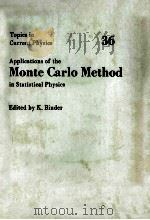《The Physics of Experimental Method》
| 作者 | 编者 |
|---|---|
| 出版 | Science Paperbacks |
| 参考页数 | 480 |
| 出版时间 | 1963(求助前请核对) 目录预览 |
| ISBN号 | 无 — 求助条款 |
| PDF编号 | 812589258(仅供预览,未存储实际文件) |
| 求助格式 | 扫描PDF(若分多册发行,每次仅能受理1册) |
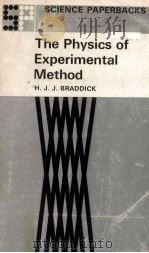
1INTRODUCTION1
The Place of Experiment in Physical Science1
2ERRORS AND THE TREATMENT OF EXPERIMENTAL RESULTS6
2.1 Introduction6
2.2 Types of Experimental Error6
2.3 Systematic Errors8
2.4 Random Errors10
2.5 The Mean12
2.6The Law of Errors15
Table 2.1 Useful Quantities connected with the Error Integral17
2.7 The Rejection of Observations19
2.8The Combination of Errors20
Table 2.2 Combination of Errors21
2.9 An Application of Least Squares—fitting a Relation to Experimental Results21
2.10 Other Applications of Least Squares24
2.11 Non-Gaussian Distributions25
2.12 The Poisson Distribution26
2.13 Mathematical Note on the Statistics of Counting(Poisson Distribution)27
Appendix to Chapter 2&by J.Maddox29
2.14 General Principles29
2.15 Logarithm Tables30
2.16 Other Mathematical Tables31
2.17 Slide Rules31
2.18 Calculating Machines31
2.19 Curve Fitting32
2.20Polynomial Form33
Table 2.3 Fitting a Polynomial35
2.21Trigonometric Approximation36
Table 2.4 A Harmonic Analysis37
2.22 Other Forms of f(x)39
2.23 The Significance of Least-Squares Calculations40
2.24 The Solution of Simultaneous Linear Equations43
2.25Systematic Elimination44
Table 2.5 Solution of a Set of Simultaneous Equations48
2.26The Relaxation Method49
Table 2.6 Table2.7 Example of Relaxation49
2.27 The Accuracy of Solutions51
2.28 Numerical Integration53
2.29The Use of Quadrature Formulae54
Table 2.8 Examples of Quadrature57
2.30The Accuracy of Numerical Integration57
Table 2.9 Errors of Quadrature Formulae59
3MECHANICAL DESIGN61
3.1 Introduction61
3.2 Kinematics61
3.3Kinematic Design62
Table 3.1 Loading of Ball-Plane Contacts64
3.4 One Degree of Translation—the Kinematic Slide66
3.5 One Degree of Freedom—Rotation69
3.6 Summary of the Uses of Kinematic Designs72
3.7 Motional Hysteresis—the Use of Spring Constraints73
3.8 Sine and Cosine Errors in Measuring Instruments75
3.9 The Control of Translational Motion76
3.10 Centring Errors—the Measurement of Rotation79
3.11 The Size of Physical Apparatus—General Considerations80
3.12 Example—Rotating Wheels82
3.13 The Size of Instruments—Other Examples83
3.14 The Size of Physical Apparatus—Thermal Considerations84
3.15 The Balancing of Instruments86
3.16 Dynamic Balance87
3.17 Mechanical Disturbances—Anti-Vibration Supports89
3.18 Practical Forms of Anti-Vibration Support91
Appendix 1 Some Points of Design93
Appendix 2Selected Engineering Formulae97
Table 3.2 Data on Loaded Beams97
Table 3.3 Second Moments of Sections98
Table 3.4 Stability of Struts98
Table 3.5 Circular Shafts99
Table 3.6 Wall Stresses in Pressure Vessels100
4MATERIALS OF CONSTRUCTION101
4.1 Introduction101
4.2 Metals—Mechanical Properties101
4.3Steels—Iron Alloys containing Carbon104
Table 4.1 Plain Carbon Steels104
Table 4.2 Tempering of Tool Steel106
4.4 Alloy Steels106
4.5 Invar and Elinvar107
4.6 Copper and its Alloys108
4.7 Copper-Zinc Alloys—Brasses108
4.8 Copper-Tin Alloys—Bronze and Gun Metal109
4.9 Copper-Nickel Alloys109
4.10 Copper-Beryllium110
4.11 Aluminium and Light Alloys110
4.12The Jointing of Metals—Soldering111
Table 4.3 Solders113
4.13 Plastic Cements for Metals115
4.14Metals for Electrical Purposes115
Table 4.4 Commercially Pure Metals for Electrical Purposes116
4.15Alloys for Electrical Purposes116
Table 4.5 Alloys with important Electrical Properties117
Table 4.6 Thermocouples118
4.16Magnetic Materials(Soft)116
Table 4.7 Soft Magnetic Materials120
4.17Magnetic Materials(Hard)121
Table 4.8 Representative Permanent Magnetic Materials123
4.18 Ferrites124
4.19 Non-Magnetic Materials125
4.20 Insulating Materials126
4.21Plastics126
Table 4.9 High-Temperature Insulators127
Table 4.10 General Purpose Insulators130
Table 4.11 Insulators for Electrometer Circuits131
Table 4.12 Notes on Insulating Materials132
Table 4.13 Plastics133
4.22 Note on the Materials of Table 4.13 and some other Plastics135
4.23 Glass137
4.24 Glass as a Mechanical Material138
4.25Glassblowing139
Table 4.14 Properties of Glasses140
4.26 Fused Quartz142
4.27Quartz Fibres143
Table 4.15 Torsion Constants and Tensile Strengths of Quartz Fibres143
Appendix to Chapter 4 Small Laboratory Furnaces145
5VACUUM TECHNIQUE147
5.1Introduction147
Table 5.1 Molecular Quantities147
5.2Pumping Speeds148
Table 5.2 Pumping Speeds of Connections150
5.3The Principles of Vacuum Pumps151
Table 5.3 Diffusion Pump Fluids154
5.4The Measurement of Low Pressures—Vacuum Gauges157
Table 5.4 Vacuum Gauges158
5.5 Getters162
5.6 Static and Kinetic Vacuum Systems164
5.7 Static Vacuum Systems—Arrangement165
5.8 Static Vacuum Systems—Construction165
5.9Static Vacuum Systems—Procedure167
Table 5.5 Typical Evacuation Schedule168
5.10 Kinetic Vacuum Systems168
5.11 Ultra-high Vacuum174
5.12 Leaks175
Appendix 1Seals between Metal and Glass177
Quartz-Metal Seals180
Appendix 2 Spot-Welding181
Appendix 3 Materials Important in Vacuum Technique182
6ELECTRICAL MEASUREMENTS AND MAGNETIC FIELDS185
6.1 Electrical Measurements185
6.2 Deflection Instruments for Direct Current185
6.3Ammeters and Voltmeters186
Table 6.1 Accuracy of Electrical Instruments186
6.4 Recording Instruments188
6.5 Moving Coil Galvanometers190
6.6The Practical Use of Moving Coil Galvanometers190
Table 6.2 Representative Galvanometer Sensitivities191
6.7 Galvanometers of High Performance192
6.8 Theory of Moving Coil Galvanometers193
6.9 Deflection Amplifiers196
6.10 D.C.Potentiometer and Bridge Measurements197
6.11A.C.Measurements198
Table 6.3 Deflection Instruments for A.C.198
6.12 A.C.Bridge Measurements199
6.13 Valve Voltmeters202
6.14 The Measurement of Small Currents203
6.15 The Arrangement of Circuits for Small Current Measurements206
6.16 The Choice of an Electrometer207
6.17 Valves as Electrometers208
6.18 The Production and Measurement of Magnetic Fields211
6.19 Coreless Coils211
6.20 Electromagnets213
6.21 The Measurement of Magnetic Fields218
Appendix to Chapter 6 Electric Motors221
7ELECTRONICS226
7.1 Electronic Aids226
7.2 Power Supplies226
7.3 Amplifiers232
7.4 The Triode Voltage Amplifier235
7.5 Inter-Electrode Capacities and the Miller Effect237
7.6 The Screen-grid Valves—Tetrode and Pentode238
7.7 The Properties of a Pentode239
7.8 The Complete Amplifying Stage239
7.9The Frequency Characteristics of R.C.Amplifier Stages241
Table 7.1 Development of Pentodes243
7.10 The Design of Amplifier Stages244
7.11 The Feedback Principle246
7.12 The Feedback Principle—Quantitative247
7.13 The Cathode Follower249
7.14"Voltage"and"Current"Feedback Amplifiers251
7.15 Stability Limitation of the Feedback Principle253
7.16 Balanced or Push-Pull Amplifiers254
7.17 D.C.Amplifiers256
7.18 The Valve as an Electrometer259
7.19 Valve Oscillators259
7.20 Tuned Circuit Oscillators259
7.21 The Resistance-Capacity Oscillator261
7.22 Aperiodic Feedback—Multivibrators262
7.23 Pulse Operation of Valve Circuits268
7.24 The Use of Diodes272
7.25 Very Rapid Pulses,Transmission Lines273
7.26Semiconductor Electronics275
Table 7.2 Semiconductor Devices278
7.27 Transistors279
7.28 Transistor Circuits—Amplifiers282
7.29 Transistor Circuits—Laboratory Control Circuits287
7.30 Transistor Circuits—Oscillators289
7.31 Transistor Circuits—Relaxation Oscillators and Derivatives291
7.32 Comparison of Transistors and Valves293
Appendix to Chapter 7 Relay Systems294
8OPTICS AND PHOTOGKAPHY298
8.1 Optics and Photography298
8.2 Illumination298
8.3Brightness of an Object298
Table 8.1 Quantities used in Analysis of Illumination299
8.4 Brightness of an Image301
8.5Typical Illuminating Systems305
Table 8.2 Light Sources310
Table 8.3 Special and Improvised Light Sources312
8.6 Light Sources313
8.7 The Eye as an Optical Instrument314
8.8 The Acuity of Vision314
8.9 The Colour and Intensity Response of the Eye316
8.10 The Behaviour of the Eye at Low Intensity—Ultimate Sensitivity317
8.11 Image-Producing Optical Systems319
8.12 Aberrations319
8.13 Telescope Objectives324
8.14 The Choice and Use of a Telescope325
8.15Microscope Objectives327
Table 8.4 Typical Performance of Microscope Objectives328
8.16 Illumination in the Microscope330
8.17 The Use of the Microscope331
8.18 Eyepieces333
8.19 Photographic Objectives336
8.20Depth of Focus337
Table 8.5 Representative Performances of Photographic Lenses338
8.21 Projection Lenses339
8.22 Reflecting Optical Systems339
8.23Anti-Reflection Coatings341
Table 8.6.Optical Applications of Thin Films344
8.24 Photography345
8.25 The Quantitative Behaviour of Photographic Materials346
8.26 The Reciprocity Law349
8.27 Characteristics of Emulsions—Colour Sensitivity350
8.28Characteristics of Emulsions352
Table 8.6 Typical Characteristics of Negative Materials352
8.29 The Choice of a Photographic Material353
8.30 The Manipulation of Photographic Materials in the Laboratory354
8.31 Photometry—The Measurement of Light Intensity356
8.32Photographic Photometry357
Table 8.7 Methods of Attenuating Light for Plate Calibration358
Table 8.8 Detectors for Microphotometers359
Appendix 1 The Setting Up of Optical Systems360
Appendix 2Optical Materials362
Table 8.9 Refractive Properties of Glasses364
9THE DETECTION OF ELECTROMAGNETIC RADIATION368
9.1 Introduction368
9.2 Photocathodes and Photoemissive Cells370
9.3 Note on Photocathodes in Commercial Tubes371
9.4 Photocells and Photomultipliers373
9.5 Application of Photocells and Photomultipliers374
9.6 Photoelectric Detectors in the Ultraviolet377
9.7Solid-state Photoelectric Detectors378
Table 9.1 Solid-state Radiation Detectors380
9.8 Non selective(thermal)Detectors381
Appendix to Chapter 9 Note on the Comparison of Detectors for Small Amounts of Light384
10THE NATURAL LIMITS OF MEASUREMENT386
10.1 The Natural Limits of Measurement386
10.2 Thermal Agitation387
10.3 Thermal Noise in Electrical Circuits388
10.4 Thermal Motion in Galvanometer Measurements390
10.5Further Fluctuation Phenomena in Electrical Circuits392
Table 10.1 Noise in Valves—Empirical Data394
10.6 Flicker Noise and Semi-conductor noise396
10.7 Examples.An Audio-Frequency Amplifier397
10.8 A Radar Receiver398
10.9 An Amplifier used in conjunction with an Ionisation Chamber399
10.10 A Photocell used to detect Weak Light402
10.11 The Coherent Rectifier System404
11SOME TECHNIQUES OF NUCLEAR PHYSICS408
11.1Ionisation by Ionising Particles408
Table 11.1 Average Energy required to produce an Ion Pair410
11.2 The Motion and Collection of Ions411
11.3 Electron Collection Chambers413
11.4 Ion-Collection Chambers416
11.5 Gas Multiplication—Proportional Counters417
11.6 The Geiger Counter418
11.7 The Construction of Counters421
11.8 The Geiger Counter in Use423
11.9Scintillation Counters425
Table 11.2 Scintillators for Particle Detection427
Table 11.3 Conversion Processes for γ-rays in Scintillator428
11.10 Neutron Counting430
11.11 Some Special Counting Methods432
11.12 Coincidence Counting434
11.13 Anti-coincidence Counting435
11.14 Electronic Devices for Nuclear Research436
11.15Errors and Statistics in Counting453
Table 11.4 Random Counting Rates for 0.1% Loss of Counts455
11.16 The Cloud Chamber456
11.17 The Bubble Chamber459
11.18 Nuclear Track Emulsions460
References464
Index475
1963《The Physics of Experimental Method》由于是年代较久的资料都绝版了,几乎不可能购买到实物。如果大家为了学习确实需要,可向博主求助其电子版PDF文件(由 1963 Science Paperbacks 出版的版本) 。对合法合规的求助,我会当即受理并将下载地址发送给你。
高度相关资料
-
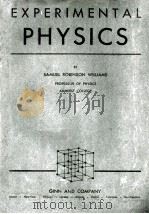
- EXPERIMENTAL PHYSICS
- GINN AND COMPANY
-
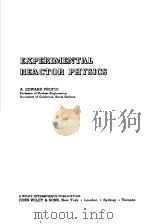
- EXPERIMENTAL REACTOR PHYSICS
- JOHN WILEY & SONS
-
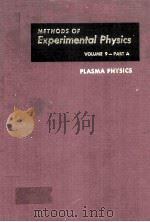
- METHODS OF EXPERIMENTAL PHYSICS VOLUME 9 PLASMA PHYSICS PART A
- 1970 ACADEMIC PRESS
-
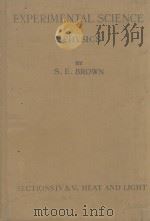
- EXPERIMENTAL SCIENCE I. PHYSICS
- 1932 AT THE UNIVERSITY PRESS
-
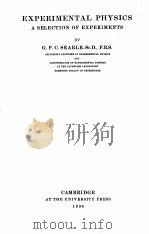
- EXPERIMENTAL PHYSICS A SELECTION OF EXPERIMENTS
- 1934 AT THE UNIVERSITY PRESS
-

- The Physics of Experimental Method
- 1963 Science Paperbacks
-
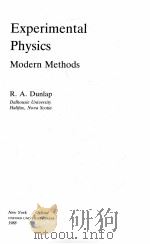
- EXPERIMENTAL PHYSICS: MODERN METHODS
- 1988 OXFORD UNIVERSITY PRESS
-

- EXPERIMENTAL PHYSICS FOR COLLEGES
- 1937 THE MACMILLAN COMPANY
-
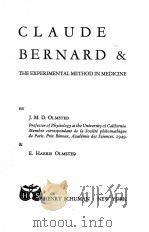
- CLAUDE BERNARD & THE EXPERIMENTAL METHOD IN MEDICINE
- 1952 HENRY SCHUMAN
-
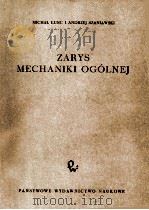
- ZARYS MECHANIKI OGOLNEJ
- 1959 PANSTWOWE WYDAWNICTWO NAUKOWE
-
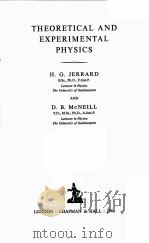
- THEORETICAL AND EXPERIMENTAL PHYSICS
- 1960 CHAPMAN AND HALL
-
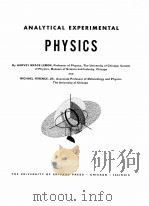
- ANALYTICAL EXPERIMENTAL PHYSICS
- 1943 THE UNIVERSITY OF CHICAGO PRESS
提示:百度云已更名为百度网盘(百度盘),天翼云盘、微盘下载地址……暂未提供。➥ PDF文字可复制化或转WORD


